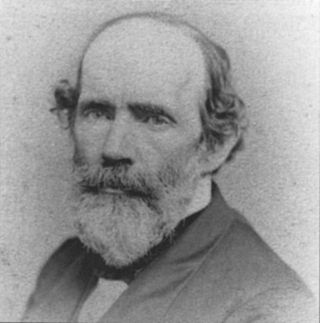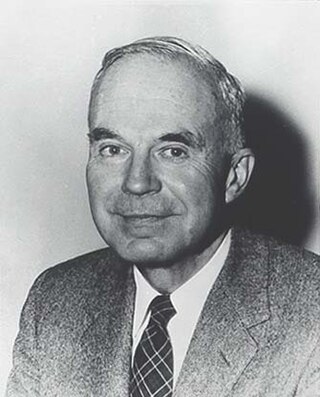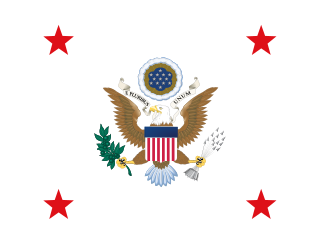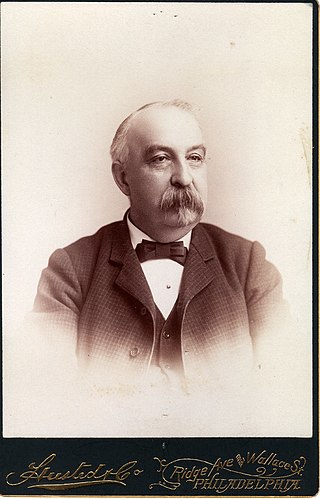
John Cassin was an American ornithologist from Pennsylvania. He worked as curator and Vice President at the Philadelphia Academy of Natural Sciences and focused on the systemic classification of the Academy's extensive collection of birds. He was one of the founders of the Delaware County Institute of Science and published several books describing 194 new species of birds. Five species of North American birds, a cicada and a mineral are named in his honor.

Charles Michael Schwab was an American steel magnate. Under his leadership, Bethlehem Steel became the second-largest steel maker in the United States, and one of the most important heavy manufacturers in the world.

Charles Allan Grafly, Jr. was an American sculptor, and teacher. Instructor of Sculpture at the Pennsylvania Academy of the Fine Arts for 37 years, his students included Paul Manship, Albin Polasek, and Walker Hancock.

Morris Jastrow Jr. was a Polish-born American orientalist and librarian associated with the University of Pennsylvania.

Walker Kirtland Hancock was an American sculptor and teacher. He created notable monumental sculptures, including the Pennsylvania Railroad World War II Memorial (1950–52) at 30th Street Station in Philadelphia, and the World War I Soldiers' Memorial (1936–38) in St. Louis, Missouri. He made major additions to the National Cathedral in Washington, D.C., including Christ in Majesty (1972), the bas relief over the High Altar. Works by him are presently housed at the U.S. Military Academy at West Point, the Library of Congress, the U.S. Supreme Court, and the United States Capitol.

The United States Assistant Secretary of War was the second–ranking official within the American Department of War from 1861 to 1867, from 1882 to 1883, and from 1890 to 1940. According to the Military Laws of the United States, "The act of August 5, 1882 authorizing the appointment of an Assistant Secretary of War was repealed by the act of July 7, 1884 the power conferred by the act of August 5, 1882 never having been exercised," indicating that the post was not filled between 1882 and 1883.
A hexamer is a type of oligomer in chemistry and biochemistry that mostly consists of six similar or identical repeating units.
The National German-American Alliance, was a federation of ethnic German associations in the United States founded in Philadelphia, Pennsylvania on October 6, 1901. Charles John Hexamer was elected its first president, and served until 1917. The mission of the NGAA was to "promote and preserve German culture in America"; it essentially sought to resist the assimilation of Germans in America. At the peak of its growth, around 1916, the national organization had chapters in forty-five states, and the District of Columbia, and a membership of approximately 2.5 million people.

Natrona is an unincorporated community in Harrison Township, Allegheny County in the U.S. state of Pennsylvania. It is located in western Pennsylvania within the Pittsburgh Metropolitan Statistical Area, approximately 24 miles (39 km) northeast of Downtown Pittsburgh. Natrona is situated along the Allegheny River at Lock and Dam Four, Pools Three and Four between Brackenridge, Natrona Heights, Karns, Allegheny Township, and Lower Burrell.
Events from the year 1850 in the United States.
Events from the year 1851 in the United States.
1856 in the United States included some significant events that pushed the nation closer towards civil war.
Events from the year 1858 in the United States.

Walter Edward Weyl was a writer and speaker, an intellectual leader of the Progressive movement in the United States. As a strong nationalist, his goal was to remedy the relatively weak American national institutions with a strong state. Weyl wrote widely on issues of economics, labor, public policy, and international affairs in numerous books, articles, and editorials; he was a coeditor of the highly influential The New Republic magazine, 1914–1916. His most influential book, The New Democracy (1912) was a classic statement of democratic meliorism, revealing his path to a future of progress and modernization based on middle class values, aspirations and brain work. It articulated the general mood:

Frank Benton Ashley Linton was an American portrait-painter and teacher. He was a student of Thomas Eakins, studied the École des Beaux-Arts, and won a bronze medal at the 1927 Salon Nationale in Paris. Likely a closeted gay man, he lived with pianist Samuel Meyers for more than thirty years.

Charles Maxwell Clement was a Pennsylvania attorney and Army National Guard officer who attained the rank of major general as commander of the 28th Infantry Division.

John Brinckerhoff Jackson was an American lawyer and diplomat who spent most of his career in Europe and the Middle East.

Ernst Emil Julius Ferdinand Hexamer was a German-born American civil engineer. He was known as originator of a system of fire insurance maps, which by the time of his death were used by fire insurance companies in all parts of the world.
Ephraim Lederer was a Jewish-American lawyer from Pennsylvania.












